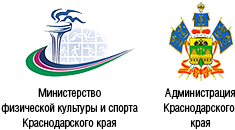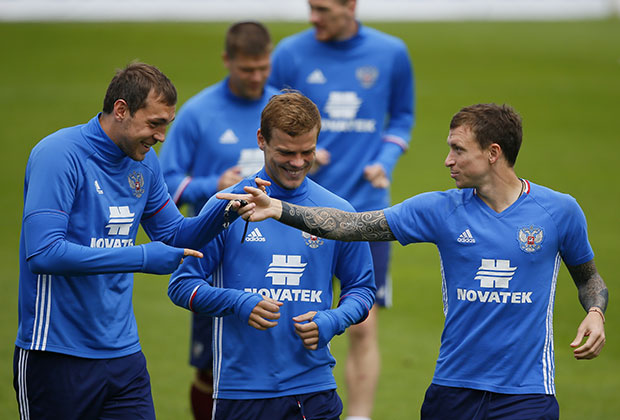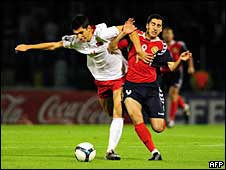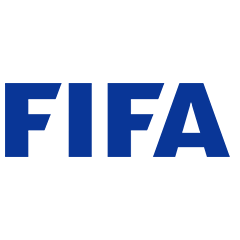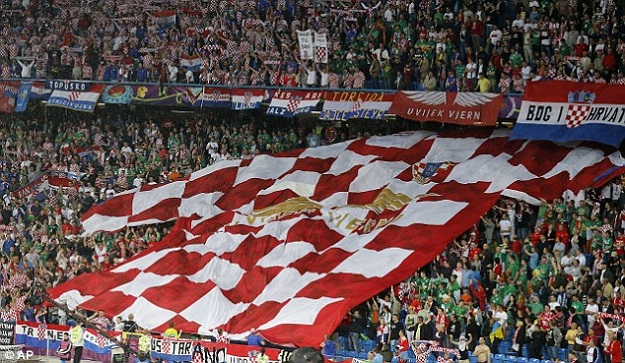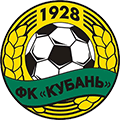Берлизев, Андрей Викторович. Андрей берлизев футбол
Берлизев, Андрей Викторович — Википедия (с комментариями)
Материал из Википедии — свободной энциклопедии
Андрей Викторович Берлизев (2 июня 1972, п. Газопровод, Ленинский район, Московская область, СССР) — советский футболист, полузащитник.
Карьера
Воспитанник футбольного клуба «Спартак» Москва. За свою карьеру выступал в советских и российских командах «Красная Пресня» Москва, «Спартак» (Орджоникидзе), «Спартак» Москва, «Локомотив» Москва, «Искра» Смоленск, ЦСК ВВС-«Кристалл» Смоленск, «МЧС-Селятино», «Коломна», «Салют-ЮКОС» Белгород, «Торгмаш» (Люберцы), «Торпедо-Виктория» Нижний Новгород, «Динамо-МГО-Мострансгаз» Москва, «Спартак-Авто» Москва, а так же финских клубах БК-ИФК Вааса и ВПС Вааса.[1]. В 2006 году входил в тренерский штат женского футбольного клуба «Спартак» Москва.
Напишите отзыв о статье "Берлизев, Андрей Викторович"
Примечания
- ↑ Нисенбойм Э., Расинский В. Спартак Москва. Официальная история 1922-2002. — Москва: МС Медиа, 2002. — 870 с. — ISBN 5-902215-01-3.
Ссылки
- [http://footballfacts.ru/players/13382-berlizev-andrej-viktorovich Профиль на сайте FootballFacts.ru]
Отрывок, характеризующий Берлизев, Андрей Викторович
– Да, уважала. Но это было другое уважение, чем то, что подумали вы. Я уважала его упорство, его неистребимую веру в своё «доброе дело». Он был помешан на том, что творил, не так, как большинство его последователей, которые просто грабили, насиловали и наслаждались жизнью. Караффа никогда ничего не брал и никогда никого не насиловал. Женщины, как таковые, не существовали для него вообще. Он был «воином Христа» от начала до конца, и до последнего своего вздоха... Правда, он так никогда и не понял, что, во всём, что он творил на Земле, был абсолютно и полностью не прав, что это было страшным и непростительным преступлением. Он так и умер, искренне веря в своё «доброе дело»... И вот теперь, этот фанатичный в своём заблуждении человек явно был настроен заполучить почему-то мою «грешную» душу... Пока я лихорадочно пыталась что-то придумать, мне неожиданно пришли на помощь... Мой давний знакомый, почти что друг, Франческо, у которого я только что купила книги, вдруг обратился ко мне раздражённым тоном, как бы потеряв терпение от моей нерешительности: – Мадонна Изидора, Вы наконец-то решили, что Вам подходит? Мои клиенты ждут меня, и я не могу потратить весь свой день только на Вас! Как бы мне это не было приятно. Я с удивлением на него уставилась, но к своему счастью, тут же уловила его рискованную мысль – он предлагал мне избавиться от опасных книг, которые я в тот момент держала в руках! Книги были любимым «коньком» Караффы, и именно за них, чаще всего, умнейшие люди угождали в сети, которые расставлял для них этот сумасшедший инквизитор... Я тут же оставила большую часть на прилавке, на что Франческо сразу же выразил «дикое неудовольствие». Караффа наблюдал. Я сразу же почувствовала, как сильно его забавляла эта простая, наивная игра. Он прекрасно всё понимал, и если бы хотел – мог преспокойно арестовать и меня, и моего бедного рискового друга. Но почему-то не захотел... Казалось, он искренне наслаждался моей беспомощностью, как довольный кот, зажавший в углу пойманную мышь... – Разрешите Вас покинуть, Ваше преосвященство? – даже не надеясь на положительный ответ, осторожно спросила я. – К моему великому сожалению, мадонна Изидора! – с деланным разочарованием воскликнул кардинал. – Вы позволите как-нибудь заглянуть к вам? Говорят, у Вас очень одарённая дочь? Мне бы очень хотелось познакомиться и побеседовать с ней. Надеюсь, она так же красива, как её мать... – Моей дочери, Анне, всего десять лет, милорд, – как можно спокойнее ответила я. А душа у меня кричала от животного ужаса!.. Он знал про меня всё!.. Зачем, ну зачем я была нужна сумасшедшему Караффе?.. Почему его интересовала моя маленькая Анна?! Не потому ли, что я слыла знаменитой Видуньей, и он считал меня своим злейшим врагом?.. Ведь для него не имело значения, как меня называли, для «великого инквизитора» я была просто – ведьмой, а ведьм он сжигал на костре... Я сильно и беззаветно любила Жизнь! И мне, как и каждому нормальному человеку, очень хотелось, чтобы она продолжалась как можно дольше. Ведь даже самый отъявленный негодяй, который, возможно, отнимал жизнь других, дорожит каждой прожитой минутой, каждым прожитым днём своей, драгоценной для него, жизни!.. Но именно в тот момент я вдруг очень чётко поняла, что именно он, Караффа, и заберёт её, мою короткую и такую для меня ценную, не дожитую жизнь... – Великий дух зарождается в малом теле, мадонна Изидора. Даже святой Иисус когда-то был ребёнком. Я буду очень рад навестить Вас! – и изящно поклонившись, Караффа удалился.o-ili-v.ru
Берлизев, Андрей Викторович — Википедия (с комментариями)
Материал из Википедии — свободной энциклопедии
Андрей Викторович Берлизев (2 июня 1972, п. Газопровод, Ленинский район, Московская область, СССР) — советский футболист, полузащитник.
Карьера
Воспитанник футбольного клуба «Спартак» Москва. За свою карьеру выступал в советских и российских командах «Красная Пресня» Москва, «Спартак» (Орджоникидзе), «Спартак» Москва, «Локомотив» Москва, «Искра» Смоленск, ЦСК ВВС-«Кристалл» Смоленск, «МЧС-Селятино», «Коломна», «Салют-ЮКОС» Белгород, «Торгмаш» (Люберцы), «Торпедо-Виктория» Нижний Новгород, «Динамо-МГО-Мострансгаз» Москва, «Спартак-Авто» Москва, а так же финских клубах БК-ИФК Вааса и ВПС Вааса.[1]. В 2006 году входил в тренерский штат женского футбольного клуба «Спартак» Москва.
Напишите отзыв о статье "Берлизев, Андрей Викторович"
Примечания
- ↑ Нисенбойм Э., Расинский В. Спартак Москва. Официальная история 1922-2002. — Москва: МС Медиа, 2002. — 870 с. — ISBN 5-902215-01-3.
Ссылки
- [footballfacts.ru/players/13382-berlizev-andrej-viktorovich Профиль на сайте FootballFacts.ru]
Отрывок, характеризующий Берлизев, Андрей Викторович
Даву был Аракчеев императора Наполеона – Аракчеев не трус, но столь же исправный, жестокий и не умеющий выражать свою преданность иначе как жестокостью. В механизме государственного организма нужны эти люди, как нужны волки в организме природы, и они всегда есть, всегда являются и держатся, как ни несообразно кажется их присутствие и близость к главе правительства. Только этой необходимостью можно объяснить то, как мог жестокий, лично выдиравший усы гренадерам и не могший по слабости нерв переносить опасность, необразованный, непридворный Аракчеев держаться в такой силе при рыцарски благородном и нежном характере Александра. Балашев застал маршала Даву в сарае крестьянскои избы, сидящего на бочонке и занятого письменными работами (он поверял счеты). Адъютант стоял подле него. Возможно было найти лучшее помещение, но маршал Даву был один из тех людей, которые нарочно ставят себя в самые мрачные условия жизни, для того чтобы иметь право быть мрачными. Они для того же всегда поспешно и упорно заняты. «Где тут думать о счастливой стороне человеческой жизни, когда, вы видите, я на бочке сижу в грязном сарае и работаю», – говорило выражение его лица. Главное удовольствие и потребность этих людей состоит в том, чтобы, встретив оживление жизни, бросить этому оживлению в глаза спою мрачную, упорную деятельность. Это удовольствие доставил себе Даву, когда к нему ввели Балашева. Он еще более углубился в свою работу, когда вошел русский генерал, и, взглянув через очки на оживленное, под впечатлением прекрасного утра и беседы с Мюратом, лицо Балашева, не встал, не пошевелился даже, а еще больше нахмурился и злобно усмехнулся. Заметив на лице Балашева произведенное этим приемом неприятное впечатление, Даву поднял голову и холодно спросил, что ему нужно. Предполагая, что такой прием мог быть сделан ему только потому, что Даву не знает, что он генерал адъютант императора Александра и даже представитель его перед Наполеоном, Балашев поспешил сообщить свое звание и назначение. В противность ожидания его, Даву, выслушав Балашева, стал еще суровее и грубее. – Где же ваш пакет? – сказал он. – Donnez le moi, ije l'enverrai a l'Empereur. [Дайте мне его, я пошлю императору.] Балашев сказал, что он имеет приказание лично передать пакет самому императору. – Приказания вашего императора исполняются в вашей армии, а здесь, – сказал Даву, – вы должны делать то, что вам говорят. И как будто для того чтобы еще больше дать почувствовать русскому генералу его зависимость от грубой силы, Даву послал адъютанта за дежурным. Балашев вынул пакет, заключавший письмо государя, и положил его на стол (стол, состоявший из двери, на которой торчали оторванные петли, положенной на два бочонка). Даву взял конверт и прочел надпись. – Вы совершенно вправе оказывать или не оказывать мне уважение, – сказал Балашев. – Но позвольте вам заметить, что я имею честь носить звание генерал адъютанта его величества… Даву взглянул на него молча, и некоторое волнение и смущение, выразившиеся на лице Балашева, видимо, доставили ему удовольствие. – Вам будет оказано должное, – сказал он и, положив конверт в карман, вышел из сарая. Через минуту вошел адъютант маршала господин де Кастре и провел Балашева в приготовленное для него помещение. Балашев обедал в этот день с маршалом в том же сарае, на той же доске на бочках. На другой день Даву выехал рано утром и, пригласив к себе Балашева, внушительно сказал ему, что он просит его оставаться здесь, подвигаться вместе с багажами, ежели они будут иметь на то приказания, и не разговаривать ни с кем, кроме как с господином де Кастро.wiki-org.ru
Берлизев, Андрей Викторович - WikiVisually
1. Ленинский район (Московская область) – Leninsky District is an administrative and municipal district, one of the thirty-six in Moscow Oblast, Russia. It is located in the center of the oblast just south of the city of Moscow. The area of the district is 202.83 square kilometers and its administrative center is the town of Vidnoye. The population of Vidnoye accounts for 33. 0% of the total population. A major part of Leninsky District was merged into the city of Moscow on July 1,2012. St. Catherines monastery Soviet Square and Leninskiy District Historical and Cultural Center Московская областная Дума, Закон №11/2013-ОЗ от31 января2013 г. «Об административно-территориальном устройстве Московской области», в ред, Закона №72/2015-ОЗ от5 мая2015 г. Вступил в силу на следующий день после официального опубликования, Подмосковье, №24,12 февраля2013 г. Постановление №123-ПГ от28 сентября2010 г, «Об учётных данных административно-территориальных и территориальных единиц Московской области», в ред. Постановления №252-ПГ от26 июня2015 г, «О внесении изменения в учётные данные административно-территориальных и территориальных единиц Московской области». Опубликован, Информационный вестник Правительства МО, №10,30 октября2010 г, Закон №79/2005-ОЗ от28 февраля2005 г. «О статусе и границе Ленинского муниципального района и вновь образованных в его составе муниципальных образований», Закона №120/2013-ОЗ от10 октября2013 г. «О внесении изменения в Закон Московской области О статусе и границе Ленинского муниципального района и вновь образованных в его составе муниципальных образований», Вступил в силу со дня официального опубликования. Подмосковье, №44,12 марта2005 г
2. Московская область – Moscow Oblast, or Podmoskovye, is a federal subject of Russia. With a population of 7,095,120 living in an area of 44,300 square kilometers, the oblast has no official administrative center, its public authorities are located in Moscow and across other locations in the oblast. In the center stands the city of Moscow, which is a separate federal subject in its own right. The oblast is highly industrialized, with its main branches being metallurgy, oil refining, and mechanical engineering, food, energy. The oblast is flat, with some hills with the height of about 160 meters in the western. The western and northern parts of the oblast contain the Moscow Uplands and their average height peaks at about 300 meters near Dmitrov and the upper point of 310 meters lies near the village of Shapkino in Mozhaysky District. The northern part of the Moscow Uplands is steeper than the southern part, the uplands contain lakes of glacial origin, such as Lakes Nerskoye and Krugloye. To the north of the Moscow Uplands lies the alluvial Verhnevolzhsk Depression, It is marshy, to the south stretches a hilly area of the Moskvoretsko-Oksk plain. Its greatest height of 254 meters lies in the area of Tyoply Stan, the plain has clearly defined river valleys, especially in the south parts, and occasional karst relief, mostly in Serpukhovsky District. In the extreme south, after the Oka River, lies the Central Russian Upland and it contains numerous gullies and ravines and has average height above 200 m with the maximum of 236 m near Pushchino. Most of the part of Moscow Oblast is taken by the vast Meshchera Lowlands with much wetland in their eastern part. Their highest hill peaks at 214 meters but the heights are 120–150 meters. Most lakes of the lowlands, such as Lakes Chyornoye and Svyatoye, are of glacial origin, here lies the lowest natural elevation of the region, the water level of Oka River at 97 meters. Moscow Oblast is located in the part of the East European craton. Like all cratons, the latter is composed of the crystalline basement, the basement consists of Archaean and Proterozoic rocks and the cover is deposited in the Palaeozoic, Mesozoic and Cenozoic eras. The lowest depth of the basement is to the south of Serebryanye Prudy, in the south area of the oblast. Tertiary deposits are almost absent within the oblast, significantly more abundant are deposits of the Carboniferous and Jurassic periods. In the Cretaceous period, a sea was covering Moscow Oblast, as evidenced by phosphate deposits, Cretaceous sediments are most common in the north of the oblast
3. Союз Советских Социалистических Республик – The Soviet Union, officially the Union of Soviet Socialist Republics was a socialist state in Eurasia that existed from 1922 to 1991. It was nominally a union of national republics, but its government. The Soviet Union had its roots in the October Revolution of 1917 and this established the Russian Socialist Federative Soviet Republic and started the Russian Civil War between the revolutionary Reds and the counter-revolutionary Whites. In 1922, the communists were victorious, forming the Soviet Union with the unification of the Russian, Transcaucasian, Ukrainian, following Lenins death in 1924, a collective leadership and a brief power struggle, Joseph Stalin came to power in the mid-1920s. Stalin suppressed all opposition to his rule, committed the state ideology to Marxism–Leninism. As a result, the country underwent a period of rapid industrialization and collectivization which laid the foundation for its victory in World War II and postwar dominance of Eastern Europe. Shortly before World War II, Stalin signed the Molotov–Ribbentrop Pact agreeing to non-aggression with Nazi Germany, in June 1941, the Germans invaded the Soviet Union, opening the largest and bloodiest theater of war in history. Soviet war casualties accounted for the highest proportion of the conflict in the effort of acquiring the upper hand over Axis forces at battles such as Stalingrad. Soviet forces eventually captured Berlin in 1945, the territory overtaken by the Red Army became satellite states of the Eastern Bloc. The Cold War emerged by 1947 as the Soviet bloc confronted the Western states that united in the North Atlantic Treaty Organization in 1949. Following Stalins death in 1953, a period of political and economic liberalization, known as de-Stalinization and Khrushchevs Thaw, the country developed rapidly, as millions of peasants were moved into industrialized cities. The USSR took a lead in the Space Race with Sputnik 1, the first ever satellite, and Vostok 1. In the 1970s, there was a brief détente of relations with the United States, the war drained economic resources and was matched by an escalation of American military aid to Mujahideen fighters. In the mid-1980s, the last Soviet leader, Mikhail Gorbachev, sought to reform and liberalize the economy through his policies of glasnost. The goal was to preserve the Communist Party while reversing the economic stagnation, the Cold War ended during his tenure, and in 1989 Soviet satellite countries in Eastern Europe overthrew their respective communist regimes. This led to the rise of strong nationalist and separatist movements inside the USSR as well, in August 1991, a coup détat was attempted by Communist Party hardliners. It failed, with Russian President Boris Yeltsin playing a role in facing down the coup. On 25 December 1991, Gorbachev resigned and the twelve constituent republics emerged from the dissolution of the Soviet Union as independent post-Soviet states
4. Россия – Russia, also officially the Russian Federation, is a country in Eurasia. The European western part of the country is more populated and urbanised than the eastern. Russias capital Moscow is one of the largest cities in the world, other urban centers include Saint Petersburg, Novosibirsk, Yekaterinburg, Nizhny Novgorod. Extending across the entirety of Northern Asia and much of Eastern Europe, Russia spans eleven time zones and incorporates a range of environments. It shares maritime borders with Japan by the Sea of Okhotsk, the East Slavs emerged as a recognizable group in Europe between the 3rd and 8th centuries AD. Founded and ruled by a Varangian warrior elite and their descendants, in 988 it adopted Orthodox Christianity from the Byzantine Empire, beginning the synthesis of Byzantine and Slavic cultures that defined Russian culture for the next millennium. Rus ultimately disintegrated into a number of states, most of the Rus lands were overrun by the Mongol invasion. The Soviet Union played a role in the Allied victory in World War II. The Soviet era saw some of the most significant technological achievements of the 20th century, including the worlds first human-made satellite and the launching of the first humans in space. By the end of 1990, the Soviet Union had the second largest economy, largest standing military in the world. It is governed as a federal semi-presidential republic, the Russian economy ranks as the twelfth largest by nominal GDP and sixth largest by purchasing power parity in 2015. Russias extensive mineral and energy resources are the largest such reserves in the world, making it one of the producers of oil. The country is one of the five recognized nuclear weapons states and possesses the largest stockpile of weapons of mass destruction, Russia is a great power as well as a regional power and has been characterised as a potential superpower. The name Russia is derived from Rus, a state populated mostly by the East Slavs. However, this name became more prominent in the later history, and the country typically was called by its inhabitants Русская Земля. In order to distinguish this state from other states derived from it, it is denoted as Kievan Rus by modern historiography, an old Latin version of the name Rus was Ruthenia, mostly applied to the western and southern regions of Rus that were adjacent to Catholic Europe. The current name of the country, Россия, comes from the Byzantine Greek designation of the Kievan Rus, the standard way to refer to citizens of Russia is Russians in English and rossiyane in Russian. There are two Russian words which are translated into English as Russians
5. Килограмм – The kilogram or kilogramme is the base unit of mass in the International System of Units and is defined as being equal to the mass of the International Prototype of the Kilogram. The avoirdupois pound, used in both the imperial and US customary systems, is defined as exactly 0.45359237 kg, making one kilogram approximately equal to 2.2046 avoirdupois pounds. Other traditional units of weight and mass around the world are also defined in terms of the kilogram, the gram, 1/1000 of a kilogram, was provisionally defined in 1795 as the mass of one cubic centimeter of water at the melting point of ice. The final kilogram, manufactured as a prototype in 1799 and from which the IPK was derived in 1875, had an equal to the mass of 1 dm3 of water at its maximum density. The kilogram is the only SI base unit with an SI prefix as part of its name and it is also the only SI unit that is still directly defined by an artifact rather than a fundamental physical property that can be reproduced in different laboratories. Three other base units and 17 derived units in the SI system are defined relative to the kilogram, only 8 other units do not require the kilogram in their definition, temperature, time and frequency, length, and angle. At its 2011 meeting, the CGPM agreed in principle that the kilogram should be redefined in terms of the Planck constant, the decision was originally deferred until 2014, in 2014 it was deferred again until the next meeting. There are currently several different proposals for the redefinition, these are described in the Proposed Future Definitions section below, the International Prototype Kilogram is rarely used or handled. In the decree of 1795, the term gramme thus replaced gravet, the French spelling was adopted in the United Kingdom when the word was used for the first time in English in 1797, with the spelling kilogram being adopted in the United States. In the United Kingdom both spellings are used, with kilogram having become by far the more common, UK law regulating the units to be used when trading by weight or measure does not prevent the use of either spelling. In the 19th century the French word kilo, a shortening of kilogramme, was imported into the English language where it has used to mean both kilogram and kilometer. In 1935 this was adopted by the IEC as the Giorgi system, now known as MKS system. In 1948 the CGPM commissioned the CIPM to make recommendations for a practical system of units of measurement. This led to the launch of SI in 1960 and the subsequent publication of the SI Brochure, the kilogram is a unit of mass, a property which corresponds to the common perception of how heavy an object is. Mass is a property, that is, it is related to the tendency of an object at rest to remain at rest, or if in motion to remain in motion at a constant velocity. Accordingly, for astronauts in microgravity, no effort is required to hold objects off the cabin floor, they are weightless. However, since objects in microgravity still retain their mass and inertia, the ratio of the force of gravity on the two objects, measured by the scale, is equal to the ratio of their masses. On April 7,1795, the gram was decreed in France to be the weight of a volume of pure water equal to the cube of the hundredth part of the metre
6. Спартак (футбольный клуб, Москва) – FC Spartak Moscow is a Russian football club from Moscow. Having won 12 Soviet championships and a record 9 Russian championships and they have also won a record 10 Soviet Cups and 3 Russian Cups. Spartak have also reached the semi-finals of all three European club competitions, historically, the club was a part of the Spartak sports society. Other teams in the society include ice hockey club HC Spartak Moscow, currently, the club is not connected with Spartak sports society and is an independent privately owned organization. In the early days of Soviet football, many government agencies such as the police, army, so many statesmen saw in the wins of their teams the superiority over the opponents patronizing other teams. Almost all the teams had such kind of patrons—Dinamo with the police, CSKA with the army and Spartak, the history of the football club and sports society Spartak originates from the Russian Gymnastics Society, which was founded on May 4,1883. In the spring of 1922 the RGO Sokol was renamed into MKS, in 1922, the Moscow Sport Circle, later named Krasnaya Presnya, was formed by Ivan Artemyev and involved Nikolai Starostin, especially in its football team. The team grew, building a stadium, supporting itself from ticket sales, the team changed sponsors repeatedly over the following years as it competed with Dinamo Moscow, whose 35,000 seat Dinamo Stadium lay close by. As a high-profile sportsman, Starostin came into contact with Alexander Kosarev, secretary of the Komsomol who already had a strong influence on sport. In November 1934, with funding from Promkooperatsiia, Kosarev employed Starostin, again the team changed its name, this time to Spartak Moscow. The club founders, four Starostin brothers, played a big role in the formation of the team, the Starostins played for the red-whites in the 1930s but right before World War II they were subjected to repression as the leaders of the most hated team by the state authorities. Elder brother Nikolai Starostin wrote in his books that he had survived in the State Prison System due to his participation in football, after the political rehabilitation, in 1954, he would later return to the team as the squads manager. In 1935, Starostin proposed the name Spartak that was derived from Spartacus, a gladiator-slave who led a rebellion against Rome, Starostin is also credited with the creation of the Spartak logo. The same year, the became a part of newly created Spartak sports society. Czechoslovak manager Antonin Fivebr is credited as the first head coach of Spartak, in 1936, the Soviet Top League was established, where its first championship was won by Dynamo Moscow while Spartak won its second, which was held in the same calendar year. Before World War II, Spartak earned two more titles, in 1937 Spartak won the football tournament of Workers Olympiad at Antwerp. During the 1950s, Spartak, together with Dynamo, dominated the Soviet Top League, when the Soviet national team won gold medals at the Melbourne Olympics, it consisted largely of Spartak players. Spartak captain Igor Netto was the captain of the team from 1954 to 1963
7. Локомотив (футбольный клуб, Москва) – FC Lokomotiv Moscow is a Russian football club based in Moscow. Lokomotiv won the Russian Premier League in 2002 and 2004, the USSR Cup in 1936 and 1957, the club was the league runner-up in 1959,1995,1999,2000 and 2001, and finished third in 1994,1998,2005,2006 and 2014. Lokomotiv was the Russian Super Cup holder in 2003 and 2005, Lokomotiv was founded as Kazanka in 1923. In 1924, the club united the strongest football players of several roads of the Moscow railway junction as KOR, in 1931, the club was again renamed to Kazanka and in 1936, it was eventually renamed to as it is known today, Lokomotiv. During the Communist rule, Lokomotiv Moscow club was a part of the Lokomotiv Voluntary Sports Society and was owned by the Soviet Ministry of Transportation through the Russian Railways, Lokomotiv debuted in the first-ever Soviet football club championship with a game against Dynamo Leningrad on 22 May 1936. In the first two championships, Lokomotiv finished fifth and fourth respectively. The first Lokomotiv success arrived shortly as in 1936, the railwaymen rose up to the occasion to beat Dynamo Tbilisi 2–0 in the Soviet Cup Final, the following years were rather successful as Lokomotiv were consistent in the national championships. However, performances after World War II suffered and in a five-year span, in 1951, Lokomotiv came second and eventually won the promotion to the Soviet Top League. This kicked off the second Lokomotivs resurgence and until the beginning of the 1960s, in 1957, Lokomotiv won the cup for the second time, and two years later, Lokomotiv won the silver medals of the Soviet League. Second place was the highest position obtained by Lokomotiv during the Soviet era. Another important trademark for Lokomotiv was the authorization of playing matches against foreign opposition. Typically, up to the late 1950s, international contacts with Soviet teams were extremely rare. In the beginning of the 1990s, Lokomotiv was considered the weakest link amongst the top Moscow clubs and it lacked both results on the pitch and fans support in the stands. However, head coach Yuri Semin and president Valeri Filatov were able to lead the clubs progress, historically, Lokomotiv was not considered to be a big club in the same vein as Spartak, CSKA, Dynamo and Torpedo. With the former Soviet republics and their clubs gone, however, solid performances in domestic league and several memorable campaigns in European Cups made Lokomotiv a superclub by Russian scales and brought back fans and supporters back to the stands. In 2002, a new stadium—Lokomotiv Stadium—resembling a traditional, compact English one was built, the arena, at that time considered to be one of the most comfortable, if not the best, in Eastern Europe gave a huge boost to the clubs fan growth rate. Eventually, by 2009, the attendance at the stadium was the second highest in Moscow. In 2002, a match was needed to decide who will be the champion, as Lokomotiv Moscow
8. Искра (футбольный клуб, Смоленск) – FC Iskra Smolensk was a Russian football team from Smolensk. It played professionally in 1937 and 1960 to 1994, in 1995 it merged with FC Kristall Smolensk. They played on the second-highest level in the Soviet First League in 1960–1962 and their best result there was 7th place in 1981. 1937, DKA Smolensk 1938–1959, FC Dynamo Smolensk 1960, FC Tekstilshchik Smolensk 1961–1964, FC Spartak Smolensk 1965–1995, FC Iskra Smolensk Team history at KLISF
wikivisually.com

